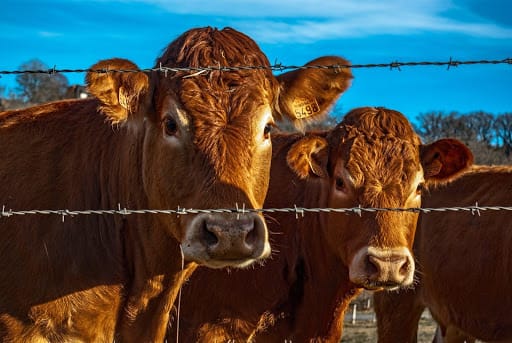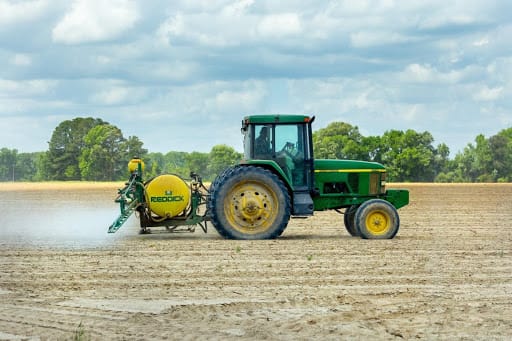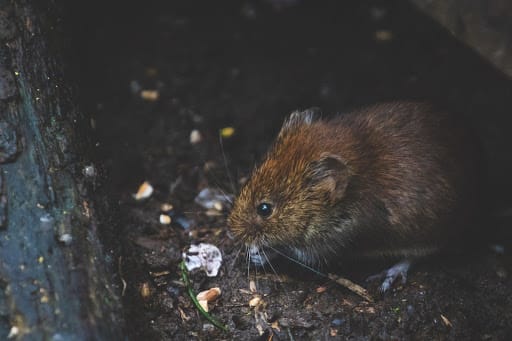If you are concerned about improving your farm’s biosecurity measures, this is for you.
I will tell you everything you need to know about biosecurity in the following areas:
1. Biosecurity measures for your existing animals
2. Biosecurity measures for your new animals
3. Biosecurity measures while managing feed, water and waste
4. Biosecurity measures for people, vehicles and equipment on your farm
5. Biosecurity measures to manage pests, weeds, vermin and wildlife
6. Biosecurity measures to manage your production outputs

Let’s begin with the basics
So, what is biosecurity, and why do you need it?
Biosecurity is nothing but all the measures you take to protect your farm from external pests, weeds and diseases. Most of it is just plain common sense. So, when you take a few steps to ensure that a new animal doesn’t bring in disease into your farm, you are actually implementing biosecurity.
On another note, as a livestock farmer in Australia, by law, you should have an emergency animal disease response plan, among other things. Implementing biosecurity measures on your farm can also help you meet this legal requirement.
1. Biosecurity measures for your existing animals
Let’s talk about the livestock you own. Clearly, this is one of the most important assets in your farm. You’ve got to inspect them regularly. There are no two ways about it.
Have regular animal management routines. This will help you detect any illnesses early. This can also protect them from known diseases in your region.
In periods of increased risk, due to local outbreaks of disease, pests or wildlife, increase the frequency of your livestock inspections. Also, record and maintain health activities and treatments administered to each animal on your farm.
In case you encounter any unusual sickness or death, immediately seek advice from your vet. Be prepared to isolate diseased animals until they recover completely.
Also, to protect both your animals as well as your employees, get them vaccinated for common diseases that can are transferable between animals and humans. They are known as zoonotic diseases.
2. Biosecurity measures for your new animals
Biosecurity measures for the animals you want to purchase, begin even before they enter your farm.
First, check the animal’s health status before purchase. It is advisable to purchase your animals from a livestock producer has relevant animal treatment and health status records.
In case, you are purchasing semen or embryos, do so only from reputable sources, who have the necessary records.
When you bring an animal into your farm, immediately segregate, wash and vaccinate them on arrival.
You need to ensure that they remain segregated from your other animals, for at least two weeks. This helps you reduce risks of spreading any infection or disease. This also helps you pay special attention to how the new animals are adapting to your farm.

If necessary, keep them isolated for a longer period and get them checked by a vet.
Legally, you need to follow the National Livestock Identification System (NLIS) requirements. Complete the necessary NLIS transfers. This will make it easier for officials to keep track of species movements and take appropriate action if an emergency animal disease outbreak occurs.
And finally, also inspect and maintain adequate boundary fences. This will help you keep your animals safe from rodents, wildlife and vermin.
3. Biosecurity measures while managing feed, water and waste
By law, you cannot feed your animals with any products that are made from vertebrates such as fish, birds, and mammals. However, feeding processed tallow and gelatin from vertebrates is acceptable.
In addition to this, purchase your feed only from vendors that provide you with commodity vendor declarations. This will help you stay away from any feed related problems.
Once the feed reaches your farm, take care to avoid contamination during unloading, storage and feeding. Store your feed in a dry, clean place free from any rats, larva, vermin or wildlife.
Similarly, ensure that you feed your animals hay, fodder, supplemental feed and drinking water only in clean feeding troughs that don’t have any previous remains in them.
It is also essential to manage effluent waste and manure properly. Make sure they are safely disposed of, without contaminating your pasture, feed or water.
And finally, plan to dispose of dead animal carcasses responsibly according to your local laws.
4. Biosecurity measures for people, vehicles and equipment on your farm
Your first line of defence, while containing people, vehicles or equipment-related risks, is to limit them.
You can do this in two ways. One, by demarcating restricted areas. And two, by having only a few points of entry that you can control.
Have a clear workflow for your usual service providers such as veterinarians, livestock agents, artificial insemination technicians, hay contractors, delivery and pick-up vehicles. Ensure that they only have access to the areas they need to work in.
Make sure one of your farm employees accompanies other service personnel or visitors at all times.
You can also have an area to clean boots and equipment on arrival and before departure. Minimize the lending or borrowing of equipment between farms and clean them thoroughly before use.

5. Biosecurity measures to manage pests, weeds, vermin and wildlife
To safeguard your animals and farm, you have to monitor and if required control rodents, vermin, feral animals, weeds and wildlife.
If required, form collective informal action groups with your neighbours and other local community members to deal with them.

Feral animals and wildlife can be attracted by waste. By disposing of all your farm and domestic waste responsibly, you can significantly reduce the chances of them entering your property.
Also, inspect your property regularly to identify any damages or breaches in your fence line. A good property fence can prevent feral and wild animals from getting in.
And last but not least, put in place a routine disease and weed management control plan that includes regular weed spraying and appropriate disposal of wastewater.
6. Biosecurity measures to manage your production outputs
Most importantly, only use animals that are healthy for the production of meat, milk or young ones. If an animal is not healthy and strong, do not use it for production.
Also, do not transport unhealthy animals. This might end up being harmful to other animals.
Some signs of an unhealthy animal include:
- It is weak and unable to undertake a journey
- It cannot walk normally, bearing weight on all legs
- It is severely emaciated or visibly dehydrated
- It is suffering from severe visible distress or injury
- It is in a condition that could cause it increased pain if transported
- It is blind in both eyes
- It is in late pregnancy
Ensure all livestock leaving the property is identified according to the appropriate NLIS Standards, meeting government legislation and have accurate documentation such as an Animal Health Declaration.
Also, when it comes to animal products and by-products such as dairy, wool or leather ensure that they leave your property in a suitable condition.
This brings us to the end of this article. I hope you found it useful. If so, please do share this with other farmers you know. You might be interested in this article how to keep your dairy farm biosecure.
If you have any questions, please let me know. I promise to answer them for you.
Thanks for reading and until we meet again.
Happy farming!
- The Dedicated Team of Pasture.io, 2020-04-01